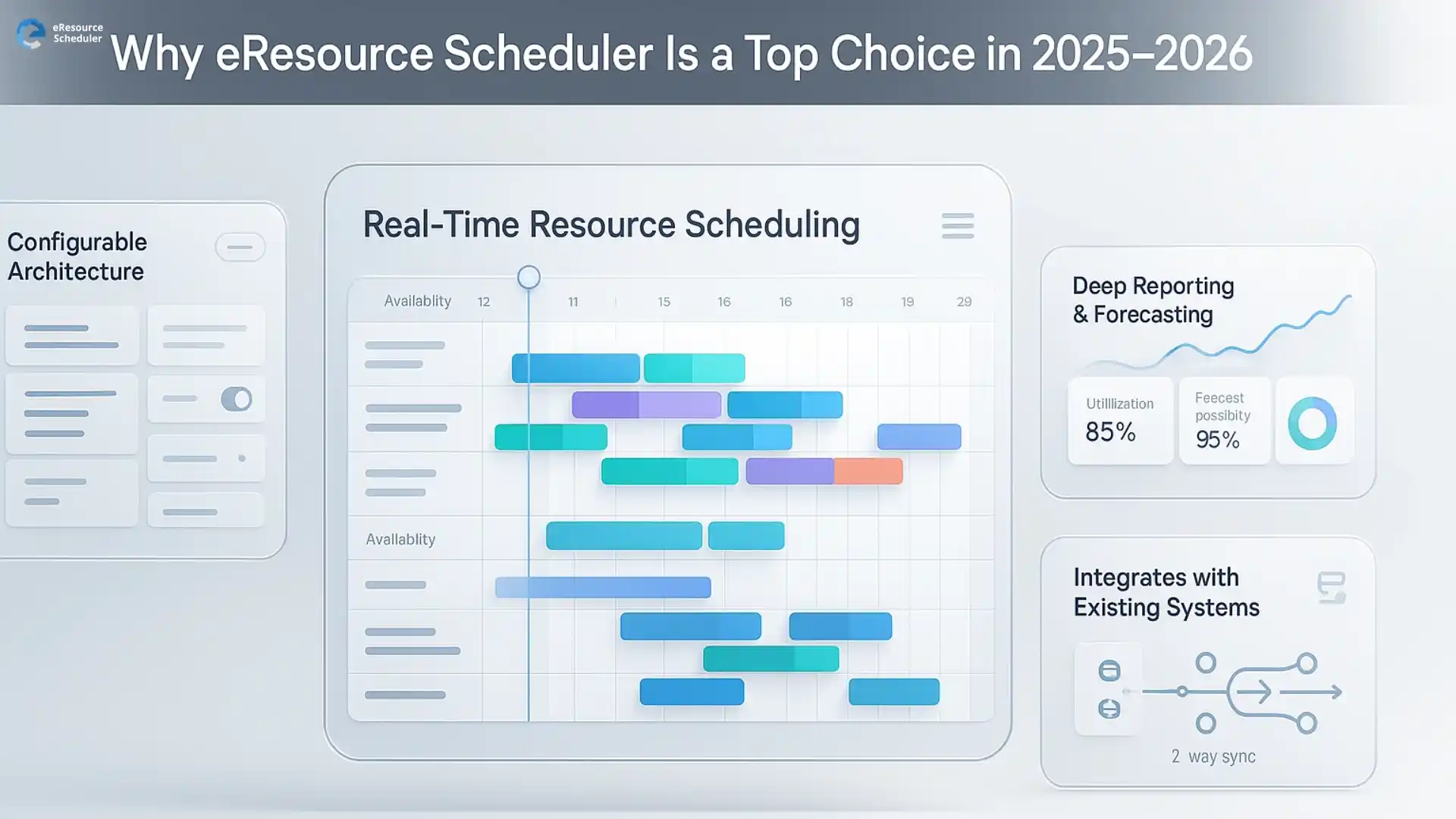
In today's fast-paced, multi-project world, resource chaos can kill productivity, demoralize teams, and derail timelines. But chaos isn't inevitable. With the right approach and the right resource scheduling software , you can bring clarity to your planning, avoid burnout, and keep projects on track.
In this article, we explore seven expert strategies to stop resource conflicts before they start, using practical principles and smart tools.
Before diving into strategies, let's first understand why resource conflicts happen in the first place:
All these issues are classic symptoms of poor planning, but they are fixable.
Here are seven proven strategies to bring order to resource chaos. Each one works on its own, but together they are powerful, especially when you enforce them using an allocation software like eResource Scheduler.
Bring every project manager, team lead, and resource owner to one planning session. Let them map out their resource needs openly, without judgment. This builds mutual trust and surface-level visibility into who expects what, when. Involving all stakeholders early helps avoid surprises and ensures shared ownership of resource trade-offs.
If one person is working on Project A for part of the week and Project B for the rest, their momentum suffers. Studies suggest that interruptions can slow down task completion by up to 25%.
Avoid frequent context switches by allocating in “chunks” to make sure someone finishes a logical module before moving to a different project.
Every project has its busy cycles. For example, dev teams may need more support during development, while QA teams spike near testing. If two or more projects are going live around the same time, stagger their delivery schedules so their peak resource demand doesn’t clash. A slight shift, even a week, can make a huge difference.
Not all tasks are equal. If someone is working on a high-priority deliverable in Project B, they should not be pulled into low-priority work on Project A. Make priority transparent, and enforce a rule: finish high-priority tasks first. This avoids resource dilution and ensures critical paths stay clear.
Allocating 100% utilization sounds efficient, but it's rarely sustainable. People need space for breaks, deep thinking, or unplanned work.
Overloading leads to fatigue, mistakes, and missed deadlines. Aim for around 80% utilization when planning. That buffer gives you breathing room and lets you absorb urgent or shifting tasks.
People take leave. They fall sick. They need time off unexpectedly. Ignoring this is a recipe for chaos. Keep a couple of backup resources ready to pick up critical tasks when someone is unavailable. That way, you don’t derail other projects when a key person is out.
This is where allocation software really pays off. With a resource scheduling software like eResource Scheduler, you get:
This resource scheduling software becomes the backbone of your planning discipline, enabling you to apply all six strategies above much more reliably.
Set regular check-ins (monthly or biweekly) with resource owners and project leads to:
When you combine these seven strategies with a powerful allocation software, you will likely see:
These are not just nice-to-have gains because they directly drive project delivery, cost efficiency, and long-term capacity planning.

In the current landscape, resource management demands more agility than ever. Remote teams, hybrid work, and on-demand project shifts mean that static schedules don’t cut it. eResource Scheduler stands out because:
When teams get aligned, priorities stay visible and scheduling decisions run through the right systems, resource chaos stops feeling inevitable and starts looking solvable. The seven strategies above give leaders a practical way to predict demand, balance workloads, and keep people focused on high-value work. Add a reliable layer of allocation software that scales with you, and the entire resource ecosystem becomes easier to manage.
With eResource Scheduler, clarity replaces conflict, and teams finally get the space to deliver their best work. Book a demo today and see how fast smooth scheduling becomes your new normal.
Ready to stop resource chaos for good? Book a demo of eResource Scheduler today and step into a world of clarity, control, and smarter scheduling.
1. What is the difference between resource allocation software and resource scheduling software?
Allocation software helps you decide who should work on what based on availability, skills, and demand. Resource scheduling software provides the visual timeline, real-time planning, and conflict resolution mechanisms to make that allocation actionable and flexible.
2. How much buffer utilization should I plan for?
A good rule of thumb is around 80% utilization. This leaves room for breaks, unexpected tasks, leave, and strategic flexibility to reassign resources when things shift.
3. Can eResource Scheduler handle very large, matrixed organizations?
Yes. Its configurable architecture supports complex team structures, role-based permissions, and multiple project managers, making it ideal for large or matrixed orgs.
4. How often should we revisit our resource schedules?
Ideally, weekly or biweekly. Frequent reviews help you catch conflicts, make real-time adjustments, and continuously calibrate your allocations based on changing priorities.
5. What if we don’t have a dedicated resource manager?
Even without a dedicated role, you can apply these strategies. Involve project managers and team leads in planning, run alignment meetings, and rely on scheduling tools like eResource Scheduler to provide visibility and structure. Over time, one of these stakeholders may naturally evolve into the resource-coordination point.
Plan Smarter. Schedule Faster.
Join thousands already using eResource Scheduler to align teams, time, and tasks seamlessly.